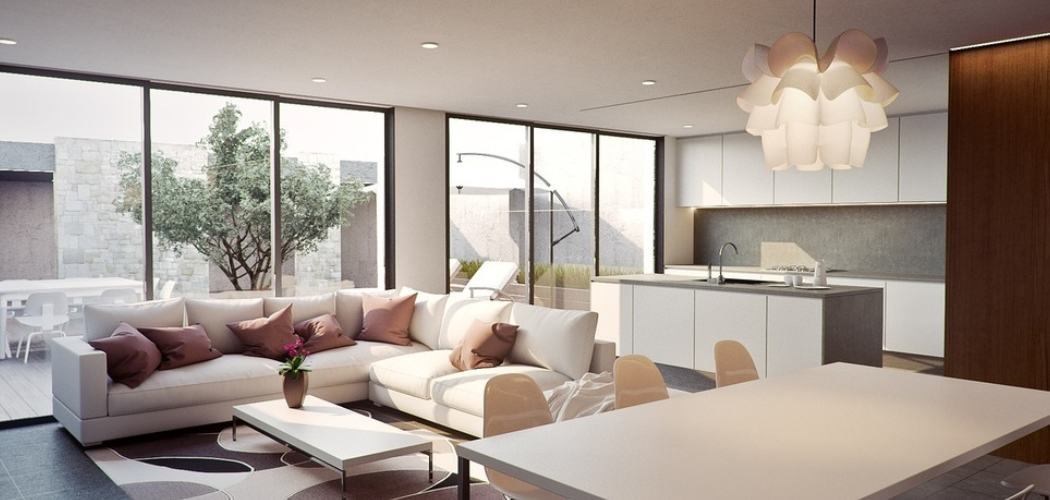Open concept living spaces have surged in popularity over recent years, transforming the way we approach home interiors. By eliminating walls and barriers, these spaces promote a sense of spaciousness, invite more natural light, and enhance the flow between different areas of the home.
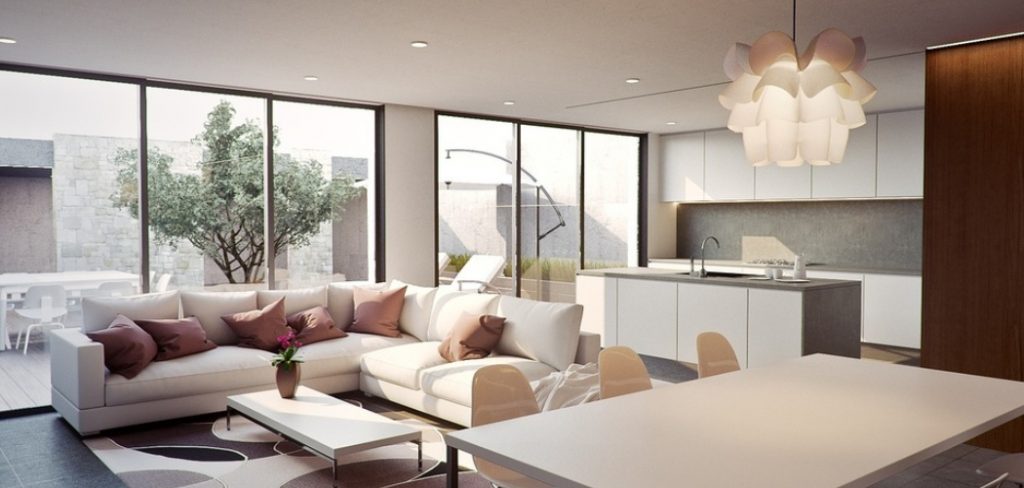
The result is a modern, airy, and integrated living environment that many homeowners find appealing. However, the challenge arises when it comes to the question of how to arrange furniture in open concept spaces. Creating well-defined, functional areas can be tricky without the traditional confines of walls, and there’s a risk of the space feeling disjointed or cluttered.
This article aims to provide practical tips and strategies on how to arrange furniture in open concept spaces to achieve a harmonious and efficient layout. By focusing on smart furniture placement and thoughtful design, we will offer ideas for delineating distinct zones—such as living, dining, and working areas—while maintaining an open, cohesive look. Whether you’re moving into a new home or reorganizing your current layout, these insights will help you make the most of your open concept living space.
Assessing the Space
Understanding the Layout
The first step in arranging furniture in an open concept space is to thoroughly understand the layout. Start by examining the overall dimensions and shape of the area. Take precise measurements to get a clear idea of the room’s size and structure. Identify architectural features such as windows, doors, fireplaces, and built-ins, as these elements will significantly influence furniture placement. For instance, large windows might dictate where the seating area should be, while fireplaces can serve as natural focal points around which to arrange furniture.
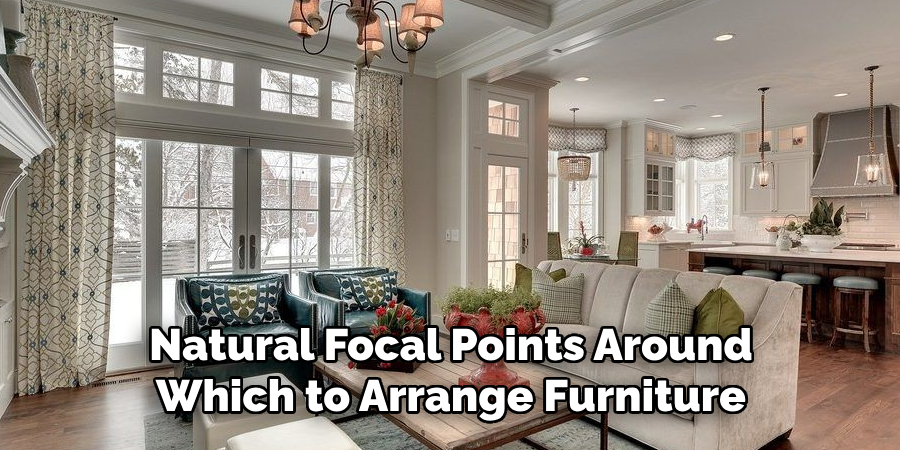
Determining Functional Zones
Once you have a grasp of the layout, it’s essential to determine the primary functions of the space. Typically, open concept areas include living, dining, and kitchen zones, but your specific needs may vary. Decide which activities will take place in each section to ensure that every zone serves a clear purpose. Additionally, consider how traffic flow will impact the arrangement of furniture and the connection between zones.
Create pathways that allow for easy movement and promote a natural flow between areas, making sure not to obstruct doorways or windows. By thoughtfully planning the layout and function of your open concept space, you can achieve a balanced and harmonious environment.
How to Arrange Furniture in Open Concept: Creating a Living Area
Choosing the Right Furniture
Selecting the right furniture is crucial for creating a comfortable and functional living area within an open concept space. Begin by choosing seating options that are both comfortable and appropriately sized for your room. Sofas, loveseats, and armchairs are excellent choices, offering a variety of seating arrangements to accommodate family and guests.
Ensure that the furniture does not overpower the space and allows for easy movement. Additionally, incorporating a coffee table and side tables enhances convenience and functionality, providing surfaces for beverages, books, and decorative items.
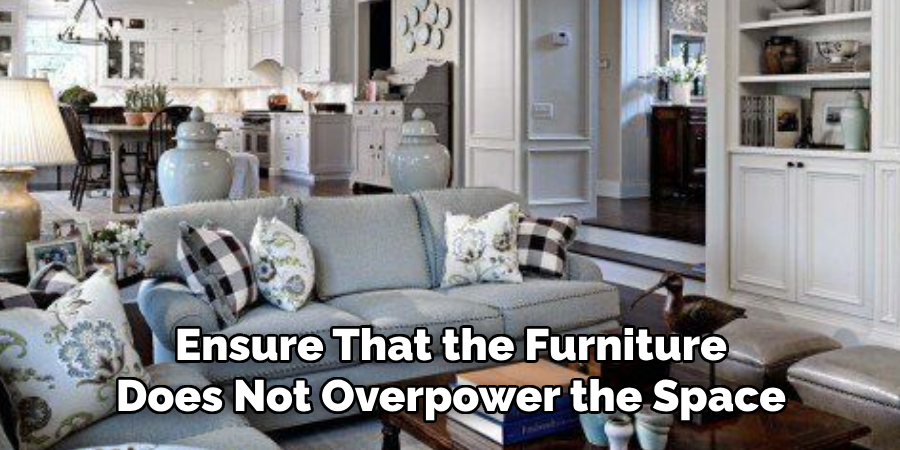
Defining the Space
Defining the living area within an open concept layout can be achieved through thoughtful use of area rugs and strategic furniture placement. Area rugs are particularly effective in delineating the living space from adjoining zones, such as the dining or kitchen areas.
Choose a rug that is large enough to accommodate all seating pieces, ensuring that the front legs of sofas and chairs rest on the rug. This not only anchors the seating arrangement but also creates a cohesive look. Arrange the seating around a focal point, such as a fireplace, television, or a central coffee table, to provide a sense of structure and purpose to the living area.
Enhancing Comfort and Style
Enhancing the comfort and style of your living area involves adding personal touches and ensuring the space is inviting. Introduce throw pillows, blankets, and decorative accessories to create a cozy and warm atmosphere. These items not only add comfort but also allow for seasonal updates without significant expense. Consider the use of lighting to further enhance the ambiance.
Floor lamps and table lamps not only provide necessary illumination but also contribute to the overall design aesthetic. By paying attention to these details, you can create a living area that is both functional and visually appealing, seamlessly integrating it into your open concept space.
How to Arrange Furniture in Open Concept: Designing a Dining Area
Selecting Dining Furniture
Choosing the right dining furniture is essential for creating a functional and comfortable dining area within an open concept space. Start by selecting a dining table and chairs that fit the scale of the space and accommodate the number of people you typically entertain. If your space is limited or if you need flexibility, consider extendable tables or benches that can provide additional seating when necessary. This will allow your dining area to adapt to various occasions, from intimate family dinners to larger gatherings.
Defining the Dining Zone
To visually separate the dining area from the living and kitchen spaces, place the dining table on an area rug. The rug should be large enough to accommodate the table and chairs, even when the chairs are pulled out. This technique not only defines the dining zone but also adds a layer of texture and warmth to the space.
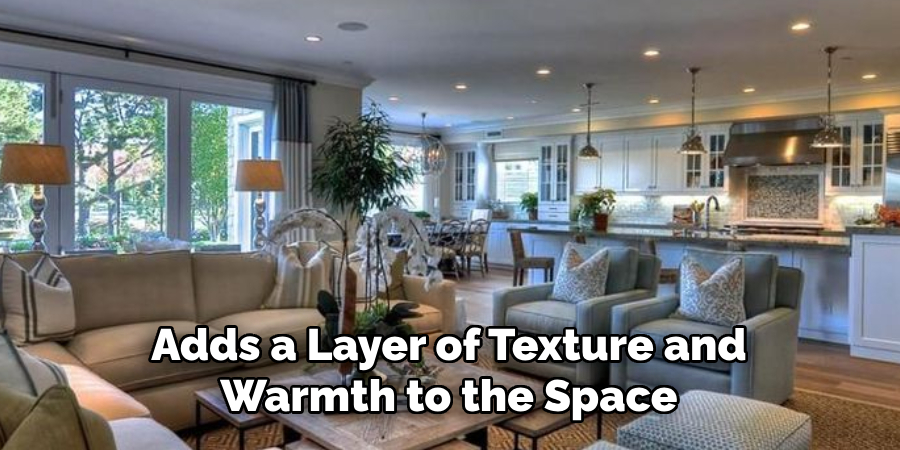
Position the dining area near the kitchen for convenience, making the transition between cooking and dining seamless. However, ensure there is enough space around the table for comfortable movement, preventing the area from feeling cramped or obstructed.
Adding Functional and Decorative Elements
Incorporate functional and decorative elements to enhance the appeal and usability of your dining area. Consider adding a buffet, sideboard, or bar cart for additional storage and serving space. These pieces can house dining essentials such as dishes, glassware, and linens, keeping them within easy reach while also providing a surface for displaying decorative items.
Furthermore, elevate the dining area’s charm with a statement light fixture, like a chandelier or pendant lights, centered above the table. This not only provides necessary illumination but also serves as a focal point, adding personality and style to the space.
Organizing the Kitchen Area
Optimizing Layout and Flow
Arranging kitchen furniture and appliances to achieve an efficient work triangle between the sink, stove, and refrigerator is essential for both functionality and ease of use. This triangular setup minimizes the steps needed when preparing meals, making kitchen tasks more streamlined and efficient.
Consider also incorporating an island or a peninsula into the layout. These elements not only provide extra workspace and storage but also serve as informal boundaries between the kitchen and adjacent areas, helping to maintain a sense of order and separation.
Creating Informal Dining or Seating
Incorporating bar stools or counter-height chairs on the island or peninsula can create an inviting space for casual dining and socializing. This setup is ideal for quick meals, engaging with family members while cooking, or entertaining guests. When adding seating, ensure there is adequate clearance around the island or peninsula for comfortable movement and ease of access. Proper spacing helps avoid a cramped feel and allows for more enjoyable and practical use of the space.
Maintaining a Cohesive Look
To create a seamless transition between the kitchen and adjacent zones in an open concept space, use consistent materials and finishes for kitchen cabinetry, countertops, and hardware. This continuity helps in blending the kitchen visually with the living and dining areas, enhancing the overall aesthetic of the space.
Adding decorative touches like plants, artwork, or open shelving can personalize the kitchen, making it feel warm and inviting. Thoughtful design choices in these elements can significantly elevate the kitchen’s visual appeal while maintaining its cohesiveness with the rest of the home.
Integrating Transitional Spaces
Using Furniture to Guide Flow
Positioning furniture strategically can greatly influence the flow of an open concept space. Furniture pieces such as consoles, bookshelves, or benches can be effectively used to define pathways and guide movement through the various zones of the area.
By placing these pieces in key locations, you can subtly direct the traffic flow, ensuring that the space is navigable and functional. It is essential to avoid placing large furniture items in high-traffic areas, as this can obstruct movement and create a sense of clutter. Instead, opt for slimmer or open-frame furniture that provides definition without hindering circulation.
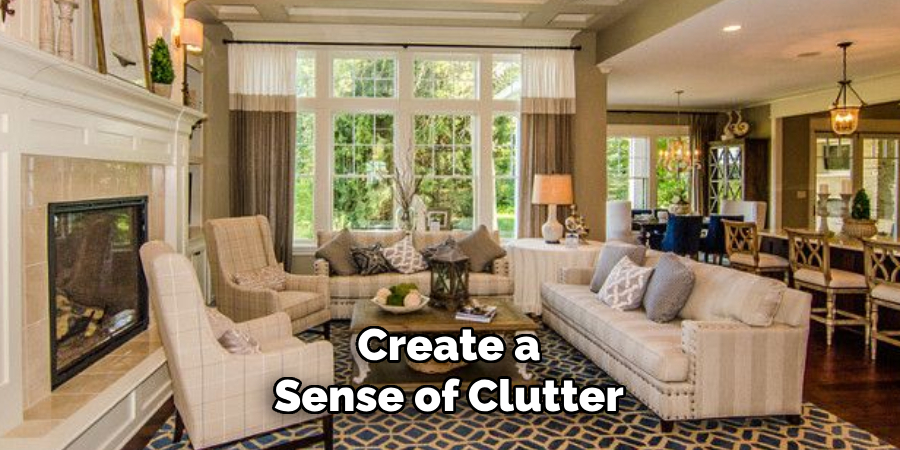
Creating Visual Continuity
Achieving visual continuity across an open-concept space ensures a harmonious and unified aesthetic. To create a cohesive look, a consistent color palette and style should be maintained throughout the area. Select complementary colors that flow seamlessly from one zone to another, and use similar textures, patterns, and materials in your furniture and decor.
This approach not only unifies the different zones but also enhances the overall design coherence. By thoughtfully integrating these elements, you can create a balanced and visually appealing space that feels both expansive and connected.
Conclusion
Arranging furniture in an open concept space requires careful consideration to achieve functionality and style. Start by defining zones using area rugs, furniture placement, or decorative elements to create distinct areas for dining, living, and kitchen activities.
Optimize the layout and flow by establishing efficient work triangles in the kitchen and ensuring pathways remain clear for easy movement. Maintaining visual continuity through a consistent color palette and complementary textures will unify the space, enhancing its overall aesthetic.
Don’t be afraid to experiment with different furniture arrangements and trust your instincts in creating a space that reflects your needs and preferences. Open concept designs offer remarkable flexibility and versatility, allowing you to make adjustments and personalize the layout as your lifestyle evolves.
A well-arranged open concept space can significantly enhance your home’s functionality, providing a cohesive look and a welcoming atmosphere. For inspiration, delve into design magazines, online resources, and consult professional designers to explore various layout ideas and styles. Embrace the journey of learning how to arrange furniture in an open concept, and enjoy the freedom to craft a space that truly feels like home.
